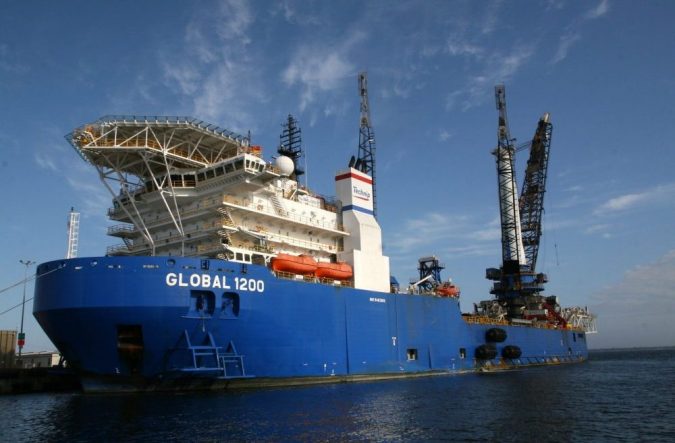
By Jim Turner, The News Service of Florida
TALLAHASSEE — Cargo handled through Florida seaports was up at least 75 percent in 2021 from before the COVID-19 pandemic, according to a report released Wednesday.
But the Florida Ports Council thinks the passenger-cruise industry is still a year or two from regaining pre-pandemic strength.
The council’s 2021-2022 Seaport Mission Plan, a report that outlines for state lawmakers conditions at the 15 ports, mostly provides a snapshot of the industry in 2021. It reflected the industry rebounding from the impact of the pandemic, while also outlining $4.5 billion in wish-list proposals to further bulk up ports against rising seas and to take advantage of labor issues at West Coast ports and lingering global supply-chain problems.
“In the near term, Florida ports can be a relief valve for cargo vessels frustrated by long waits elsewhere at congested ports,” the report said. “Long term, it is believed that our ports will benefit when U.S. port congestion in general eases, as it will allow major ocean carriers to focus on strategic decisions such as adding ports to permanent port rotations, rather than focusing their attention on more immediate issues.”
Michael Rubin, president and CEO of the ports council, said the overall numbers will continue to improve as 2022 data is compiled for next year’s report, though the cruise industry might not meet 2019 levels until 2024.
“It’s still a little COVID-kind of data,” Rubin said. “So, we’re still waiting for everything to get back up. The cruise industry is starting to get back up. So, the good stories are yet to come.”
Florida ports, which are at the center of the U.S. cruise industry and play a major role in the state’s tourism, recorded 8.2 million people getting on cruise ships in 2019 — the year before the pandemic began and temporarily shut down the industry.
In 2021, PortMiami, Port Everglades, Port Canaveral, Port of Tampa and Port of Jacksonville collectively recorded 6.1 million cruise passengers.
“Before COVID, the cruise industry spent a lot of money on building bigger and nicer vessels. So they’re looking to fill those,” Rubin said.
“The numbers are up,” Rubin continued. “We had a concern that when it first started, they were going out half-empty. And now I think the numbers are there that they’re at least 75 percent, but not 100 percent.”
As for the bread and butter of most ports, the amount of waterborne cargo handled has gone from 111.8 million tons in 2019 to 195.5 million tons last year. That came as people and businesses spent federal stimulus money, putting stress on supply chains.
The amount of cargo handled fell to 102.5 million tons in 2020, as businesses initially cut back when the pandemic hit.
The Florida Department of Transportation in 2021 spread $250 million from the federal American Rescue Plan Act stimulus plan to help with port projects, with the largest chunks going to Port Canaveral at $72.2 million; PortMiami at $66.9 million; and Port Everglades at $58.26 million.
Now, state officials are working on getting more federal dollars through an infrastructure law that President Joe Biden signed in November. The law provides $550 billion through 2026 for roads, bridges, and mass transit, water infrastructure, resilience and broadband.
“I think what the supply-chain crisis has done for us is raise the idea of how important it is for those infrastructure investments,” Rubin said. “You know, certainly it was nice to see Congress put more money into it. I’m hopeful that the (U.S. Department of Transportation) secretary up there will actually spend some money in Florida, rather than dumping money into California, which in my mind doesn’t do much.”
Five-year capital improvement plans outlined for Florida ports in the council’s report top $4.5 billion. Those plans include channel and harbor deepening, land acquisition, intermodal connections and terminal development and improvements.
Most of the work is sought by PortMiami, Port Tampa Bay, SeaPort Manatee, Port Everglades and JAXPORT, with $1.905 billion in projects across the state intended to address supply-chain issues, such as cargo terminal expansions and technology.
Projects to build up cruise facilities account for $1.413 billion, with $360.5 million targeted for site improvements and $305.4 million going for channel and harbor deepening.
“Some of the major issues facing Florida ports include required bulkhead improvements considering revised FEMA (Federal Emergency Management Agency) floodplain and sea level rise; uplands improvements with stormwater requirements; infrastructure enhancements to improve port resiliency; and establishing a baseline and long-term goals for emission levels,” the report said.
Most of the money is expected to come from revenue generated through port operations, along with financing available from federal, state or local governments.
The report said ports account for $117.6 billion in economic value to the state. In a new state budget that took effect July 1, lawmakers included $135.86 million for ports as part of $12.6 billion in transportation funding.



